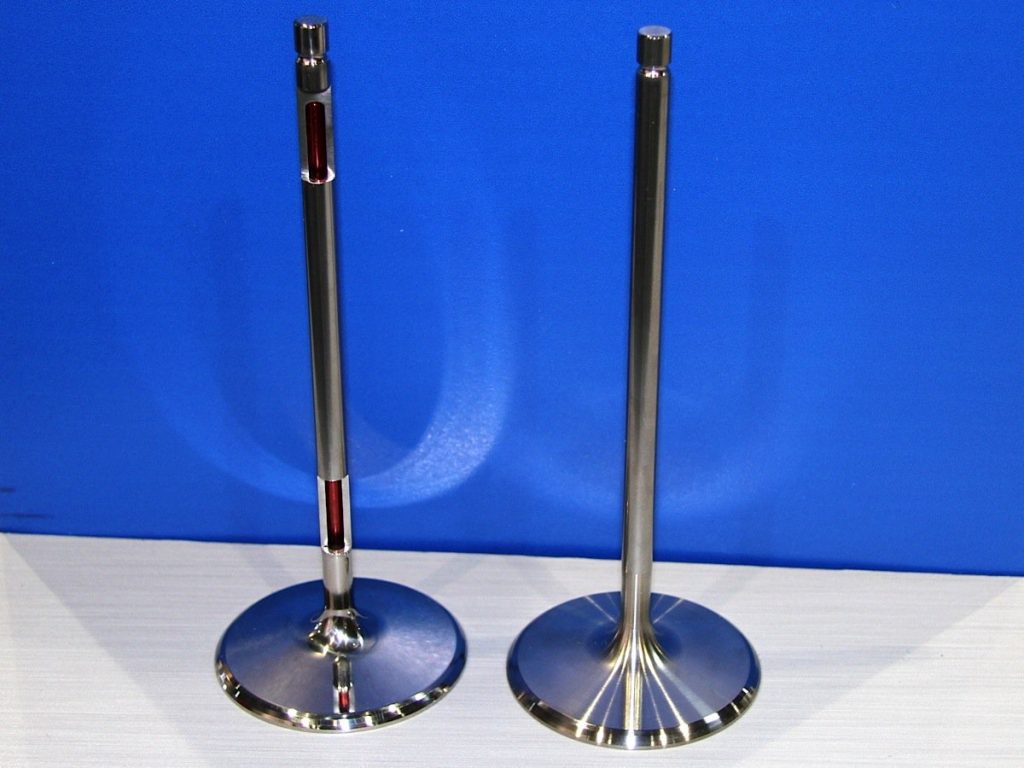-
BMW Motorrad reveals that the 2019 BMW S 1000 RR uses hollow stem titanium valves.
-
The hollow core lightens the valves.
-
Lighter valves allow higher RPM ceiling reliably.
BMW Motorrad reveals that the 2019 BMW S 1000 RR uses hollow stem titanium valves.
Everyday Life of Valves
Engine valves are subjected to some of the harshest environments inside an engine. Compared to pistons, they are not lubricated by engine oil hence they are not cooled by it. The valve head – the surface which faces the combustion chamber – is exposed to extremely hot combustions gases of around 700oC.
If that’s not tough enough, each valve is slammed open and then slammed shut multiple times within a space of time. At the 14,200 RPM redline of the old S 1000 RR, each valve is opened and closed at 118 times persecond. The 2019 S 1000 RR is equipped with ShiftCam and has its rev limit increased to 14,600 RPM, on the other hand. Each valve now opens and closes 122 times per second at maximum revs.
As light as valves are compared to the heavier reciprocating parts of the engine, they are still subjected to almost 5,000G of forces. That 5000 times their own weight.
Enter the Metal of the Titans
So, how do you reduce those forces resulting from inertia? Lighten the valves, of course. But how do you lighten something without compromising its strength? The answer was titanium. Titanium has the best strength-to-density ratio among all metallic elements.
Titanium valves are not new. They’ve been around from a few decades and were used in extensively in racing car engines before being adopted as aftermarket products for motorcycles in the mid-90’s. Since then, many manufacturers have utilized titanium valves in their high-performance models.
However, they still have mass and subsequently inertia when in motion. The engine needs more energy for the cam lobes to force the valves to open. The results are power wastage, lower maximum revs and lower reliability.
When Less is More
That’s why BMW Motorrad decided to fit hollow-stem valves to the new S 1000 RR.
But again, hollow stem valves aren’t new.
Car manufacturers have used hollow stem valves filled with sodium since the 70’s. Aftermarket valve specialist Ferrea Racing Components have been making titanium ones for many years.

However, the 2019 S 1000 RR has the distinction of being the first production motorcycle to use titanium hollow stem valves.
How are They Made?
A valve is made of two parts. The stem and base are then friction-welded into a single piece.
BMW bores out 2mm in the centre of the 5mm diameter valve, before welding them. BMW says the process is a secret.















